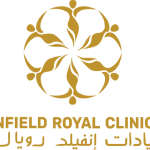Introduction
Rhinoplasty has the power to transform a person's appearance and boost their confidence. However, like any surgical procedure, it carries risks and ethical dilemmas. These include the patient's motivations, the surgeon's responsibilities, cultural and societal influences, and the psychological impacts of the Rhinoplasty Surgery Muscat. Understanding these ethical considerations is crucial for anyone contemplating rhinoplasty.
The Process of Rhinoplasty
Consultation
The rhinoplasty process begins with a consultation with a board-certified plastic surgeon. During this meeting, the surgeon evaluates the patient's nasal structure, discusses their goals, and explains the potential outcomes and risks.
Preoperative Planning
Once the decision to proceed is made, detailed preoperative planning occurs. This includes medical evaluations, imaging studies, and the creation of a surgical plan tailored to the patient’s unique anatomy and desires.
Surgery
Rhinoplasty can be performed using two primary techniques: open or closed. In an open rhinoplasty, the surgeon makes a small incision across the columella (the tissue between the nostrils), providing greater visibility and access to the nasal structures. A closed rhinoplasty involves incisions within the nostrils, resulting in no visible scars.
Recovery
Postoperative care is essential for a successful recovery. Patients must follow their surgeon's instructions, which typically include managing swelling, avoiding strenuous activities, and attending follow-up appointments.
Benefits of Rhinoplasty
Aesthetic Enhancement
Rhinoplasty can significantly improve the appearance of the nose, creating a more harmonious facial profile. This can lead to increased self-esteem and confidence.
Functional Improvement
For some patients, rhinoplasty addresses functional issues such as breathing difficulties caused by a deviated septum or other structural abnormalities.
Psychological Benefits
Many patients experience psychological benefits, including improved self-image and reduced social anxiety, following rhinoplasty.
Characteristics of Ethical Rhinoplasty
Informed Consent
Ethical rhinoplasty begins with informed consent. Patients must fully understand the risks, benefits, alternatives, and potential outcomes of the surgery. Surgeons are responsible for providing clear, honest information.
Realistic Expectations
Patients must have realistic expectations about the results of rhinoplasty. Ethical surgeons ensure that patients understand the limitations of the procedure and do not promise unrealistic outcomes.
Psychological Evaluation
A psychological evaluation may be necessary to ensure that the patient is undergoing rhinoplasty for the right reasons. This helps identify underlying issues such as body dysmorphic disorder (BDD), which can complicate the patient's satisfaction with the results.
Cultural Sensitivity
Surgeons must be culturally sensitive and avoid imposing Western beauty standards on patients from diverse backgrounds. Respecting individual aesthetic preferences and cultural values is crucial in ethical rhinoplasty.
Surgeon's Skill and Experience
Choosing a highly skilled and experienced surgeon is vital. Ethical considerations include the surgeon’s ability to perform the procedure safely and achieve the desired results.
Conclusion
Rhinoplasty is a powerful tool for enhancing both appearance and function, but it must be approached with careful ethical consideration. By understanding the process, benefits, and characteristics of ethical rhinoplasty, patients can make informed decisions that align with their values and goals. Always consult with a board-certified plastic surgeon who prioritizes ethical practices to ensure the best outcomes.






Comments